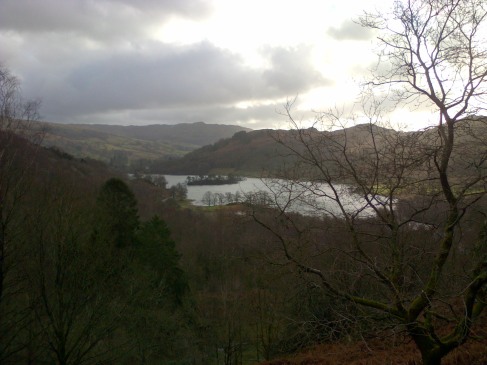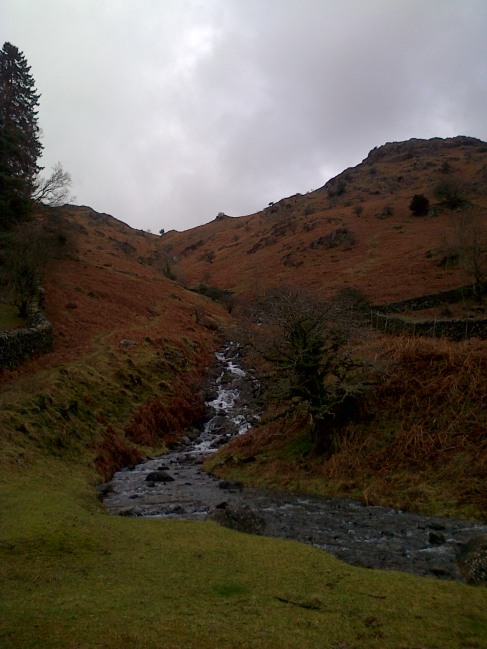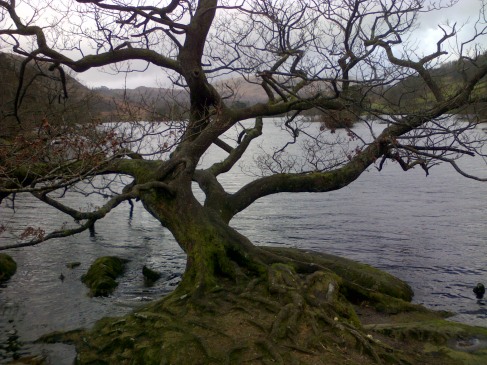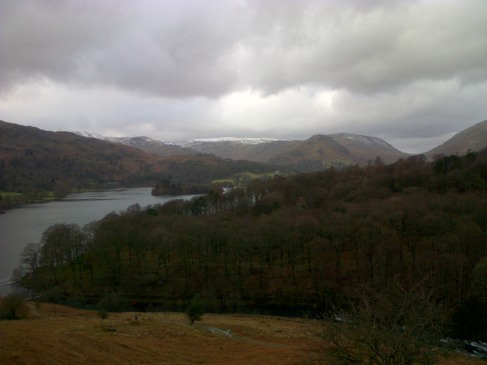Loweswater – Mosedale – Floutern Tarn – Loweswater. 3.8.2014
A day of mixed weather – always threatening rain, flirting blue sky, splashes of weak sun – we left Loweswater following the bridleway to Ennerdale. As the lane climbed into Mosedale, crows and ravens sat on the walls, rising in their murders and unkindnesses as we approached. One big young raven, beak evilly hooked, hopped along the wall ahead of us; a dead sheep on the other side of a wall providing the explanation for the presence of so many of these birds of ill-omen. Through a gate and out into the valley proper, one path to the right leading up Mellbreak, the other, ours, alongside a small fir plantation, with one ash tree, its leaves beginning to redden, fretting in the wind.
Mosedale is quiet and lonely. Today in the wet it was very green, the bridleway clear at the start but soon merging into bog and marsh, water oozing up under each foot-fall, the black peat mixing with the red-brown earth. The river ran high and fast and loud, horseback brown. The head of the valley widened ahead of us, our path meeting a pass from Crummock Water, alongside Scale Force, and continuing West to Ennerdale. Along this pass we climbed up to Floutern Tarn, where Coleridge had been 212 years ago almost to the day on his own walking tour of the Lakes in August 1802. The view from the foot of the tarn tumbles down the valley towards Buttermere. The road from Buttermere into Newlands was pale grey amongst the darker grey of the rain soaked fells. The cloud cover over the higher fells made them rise into the mist infinite.
After lunch at the tarn, we took another smaller path North, and ahead saw the Solway Firth, the Scottish coast and the mountains of Dumfries and Galloway. And still behind us the sky grey, rain, cloud, the rain moving in thin veils drawn by an invisible hand. The path skirted Hen Comb and brought us up onto the brow of Loweswater Fell, again looking back, the distinct, geometric shape of Honister Crag still just darker than the air around it, but in the direction we walked, our own Lorton Vale in sunshine, with Fellbarrow above, Loweswater blue, twinned with the sky. Always on our Eastern hand, Mellbreak clothed imperiously in purple heather, with salmon pink edging.
The path peters out at Little Dodd – we dropped down the slope, easy going, and decided on a small act of civil disobedience to bring us back to Loweswater, a clamber over a padlocked gate and across the fields to an old barn and then down a straight track to Maggie’s Bridge, a perfect, lovely packhorse bridge. But trespassing these meadows brought us into the heart of the whole, the hills and the fields and the lake.




